|
The Portuguese Man-of-War is often mistakenly referred to as a jellyfish. It is actually a species of siphonophore, which is a group of animals that are closely related to the jellyfish. A siphonophore is unusual in that it is comprised of a colony of specialized (genetically identical individuals called zooids or clones), with various forms and functions, all working together as one. Each of the four (4) specialized parts of a Man-of-War is responsible for a specific task, such as (1) floating, (2) capturing prey, (3) feeding, and (4) reproduction. Found mostly in tropical and subtropical seas, Portuguese Man-of-War are propelled by winds and ocean currents alone, and sometimes float in legions of 1,000 or more! The Portuguese Man-of-War is recognized by its balloon-like float, which may be blue, violet, or pink and rises up to six inches above the waterline. Lurking below the float are long strands of tentacles and polyps that grow to an average of 30 feet and may extend by as much as 165 feet. These tentacles contain stinging microscopic capsules loaded with coiled, barbed tubes that deliver venom capable of paralyzing and killing small fish and crustaceans. While the Man-of-War's sting is rarely kills a human, it can pack a painful punch that causes welts on exposed skin. DIFFERENCE BETWEEN A JELLY FISH & A PORTUGUESE MAN OF WAR The Portuguese Man-of-War is a predatory species. It uses its feeding tentacles to sting and paralyze small fishes, pelagic crustaceans, and other invertebrates. The feeding tentacles may be up to 165 feet in length. These tentacles deliver a powerful sting and are also used for defense against predation. Fast Facts About the Portuguese Man-of-War
Fun Facts About the Portuguese Man o’ War 1. The Portuguese man o’ war is not a jellyfish, it is considered a siphonophore, which is a colony of specialized animals called zooids that work together as one. 2. The Portuguese Man-of-War does not swim. Instead, it uses wind and ocean currents to propel it forward. 3. The Portuguese Man-of-War was named after its resemblance to 18th century Portuguese warships. 4. The Portuguese Man-of-War's float can be up to 6 inches (15 cm) tall. 5. The Portuguese Man-of-War's tentacles can grow as long as 165 feet. The Portuguese Man-of-War was named after it's resemblance to 18th Century Portuguese warships. It has a distinctive sail-like float that can reach 12 inches in length, 5 inches in width, and rises 6 inches above the water surface. The colorful float may be translucent blue, pink, or violet. This gas bladder is filled with nitrogen, oxygen, argon, and a small amount of carbon dioxide from air, plus up to 14% carbon monoxide. In addition to the float, the Man-of-War has three other polyp types. The tentacles (used for defense and disabling prey, which can reach up to 165 feet in length), the gastrozooids (used for feeding), and the gonozooids (used for reproduction). The Portuguese Man-of-War includes two species. (1) The Pacific Man-of-war (Blue Bottle) and the (2) Australian Man-of-War. The Pacific Man-of-War has a wider color range and many tentacles, while the Australian Man-of-War has a single long tentacle. Habitat and Range - The species occurs in the warm waters of the Atlantic, Pacific, and Indian Oceans, as well as the Caribbean and Sargasso Seas. The Portuguese Man-of-War lives on or just below the surface of the water. A siphon in the float lets the animal float or descend in the water. Wind pushes the animal's float at a 45 degree angle. Some Portuguese Man-of-War are "left-sided," while others are "right-sided." The different orientations (of the floats), help the animals to disperse across the oceans. Diet - The Portuguese Man-of-War is a carnivore. Its tentacles contain stinging cells called nematocysts that paralyze and kill small fish, worms, and crustaceans. The tentacles move prey to the gastrozooids on the underside of the float. The gastrozooids secrete enzymes that digest the prey. Nutrients are absorbed and circulated to other polyps. The Man-of-War is prey to sea turtles, sea slugs, and crabs. Reproduction and Offspring - Each individual Portuguese Man-of-War is either a male or a female, and they reproduce sexually via a method known as broadcast spawning. Large groups of Man-of-War's come together, where females release their eggs and males release their sperm into the water column, all at the same time. This usually occurs in the autumn of each year. This method increases the likelihood that eggs will be fertilized. Portuguese Man-of-War and Humans - Both jellyfish and Man-of-War tentacles can sting after the animal is dead or when they are detached. Stings are painful, although not usually fatal. Neurotoxins in the venom cause mast cells in skin to release histamines, resulting in inflammation. Treatment typically involves tentacle removal, using vinegar or ammonia to inactivate remaining nematocysts, and soaking the affected area in hot water. Oral or topical antihistamines may be administered to combat inflammation. 16 FUN FACTS ABOUT PORTUGUESE MAN OF WAR FACT #1) It's Not a Jellyfish - The Portuguese Man-of-War may look like a bloated jellyfish, but it’s actually a siphonophore—a bizarre group of animals that consist of colonies made up of dozens, hundreds, or even thousands of genetically-identical individual creatures. A siphonophore starts out as a fertilized egg. But as it develops, it starts "budding" into distinct structures and organisms. These tiny organisms—called polyps or zooids—can’t survive on their own, so they merge together into a tentacled mass. They must cooperate as one in order to do things like travel and catch food. The long tentacles develop to hunt and ensnare prey; smaller tentacles grow to help digest food; and still other tentacles dangling are used to facilitate reproduction. Every Man-of-War also has what is called a “float” (an overgrown, bag-like polyp which acts as a giant gas bladder and sits at the top of the colony). Capable of expanding or contracting at will, it provides the Man-of-War with some buoyancy control. An expanded float also enables the colony to harness winds to move around. FACT #2) A Close Relative is the Pacfic "Blue Bottle" - Portuguese Man-of-War's can be found in warmer parts of the Pacific, the Caribbean, the Indian Ocean, and of course, the Atlantic. It’s sometimes called the Pacific “Blue Bottle Man-of War" and is restricted to the Pacific and Indian Oceans. It’s smaller than the Australian species and unlike its bigger counterpart—it hunts using multiple tentacles. FACT #3) The Name "Portuguese Man-of-War" is Probably a Naval Reference - In the age of sailing, many European navies used tall warships loaded with cannons and propelled by three masts. British sailors took to calling this kind of vessel a “Man of War.” The Portuguese Man-of-War are colonies which spend a lot of time floating on the water’s surface, when the gas bladder is expanded (it looks and acts a bit like a sailboat), hence the name “Man-of-War.” There are a couple theories as to how it got it's name. (1) 19th century scientists proposed that sailors encountered it near the Portuguese island of Madeira, and thought it looked like the Portuguese version of the ship. (2) Possibly Renaissance-era sailors thought it resembled the helmets worn by Portugal’s soldiers during the 16th century.  FACT #4) Man-of-War Tentacles Can Be Up To 165 Feet in Length - At least, that’s the maximum length for a tentacle which is normally around 30 feet long. It uses venom-spewing cells to deliver painful, neurotoxic stings. When a tentacle is detached from the rest of the colony (and washes ashore), it might drift around for days on end until it decomposes. Be warned: Even a severed tentacle can sting you. FACT #5) The Portuguese man-of-war is four organisms working as one - The Portuguese Man-of-War may appear to be a single organism, but it's actually four different organisms (or zooids) in one. Each organism provides a necessary function for the entire creature to survive. The top zooid, which resembles a bottle (or mohawk), is the pneumatophore. It's a gas-filled bag, which allows the Man-of-War to float. The next two zooids (gastrozooids & dactylozooids), are the tentacles used for feeding. The final zooid (gonozooids), deals with reproduction. FACT #6) It was named for its resemblance to ships - That mohawk is also how the man-of-war got its name. It closely resembles ships that the Portuguese navy used in the 18th century when they were at full sail. The name also may refer to the topped helmets Portuguese soldiers wore during the same period. FACT #7) On RARE Occasions, Stings Can Be Fatal to Humans - The odds of being killed by a Portuguese Man-of-War are slim. But just because deaths are rare doesn't mean you should touch one (just to find out). On RARE occasions a Portuguese Man-of-War can kill, if you receive enough venom from the tentacles. FACT #8) Portuguese Man-of-War can Deliver a Horrible Sting - It may not be a jellyfish, but the Man-of-War does have one trait we commonly associate with jellyfish: painful stings. The tentacles are covered in venom-filled nematocysts, which is how a Man-of-War kills their prey, typically small fish and plankton. The stings are painful to humans, but are rarely fatal. With tentacles that can reach up to 165 feet (getting wrapped up in one), can leave you looking like you've been struck by a whip. Treatments for the stings have been hotly debated, but a 2017 study in the journal Toxins recommended vinegar to wash away any remaining nematocysts once the tentacles are removed and then soaking the affected area in hot water, ideally 113 degrees Fahrenheit (45 degrees Celsius) for around 45 minutes. FACT #9) Some Fish Live in Them - Given that tiny fish make up about 70 to 90 percent of the Man-of-War's diet (it also eats shrimp and other crustaceans). One fish, known as the "Man-of-War fish" lives among the tentacles even though it's not immune to its stings, swimming nimbly between the stingers. These young fish eat the plankton which wanders under their hosts and as they get older, they will sometimes steal the Man-of-War's prey—or nibble on its tentacles. FACT #10) The Portuguese Man-of-War does Have Predators - The loggerhead turtle and the ocean sunfish both gobble up both Portuguese Man-of-War's and jellyfish. Also notable among its predators is the blanket octopus, and the Blue Gaucus (a sea slug). The Blue Gaucus (aka as the Blue Dragon or Sea Butterfly) stores the stinging venom in its own body (making it also a venomous) animal to touch. The Blue Gaucus, as a result can deliver a far more potent sting than the Portuguese Man-of-War can alone. FACT #11) Sea Slugs Like to Steal Their Toxins - The Loggerhead sea turtles, blanket octopus, and sea slugs, are all thick-skinned enough to eat them. Sea slugs (aka Blue Gaucus, Blue Dragon or Sea Butterflies), devour the Man-of-War and actively harvest their toxins and store these toxins (or venom) in their own bodies to to later use as a deterrent for its predators. FACT #12) Man-of-War Come In Pretty Colors - Although it’s translucent, the float is usually tinted with blue, pink, and/or purple hues. Beaches along the American Gulf Coast raise purple flags in order to let visitors know when groups of Man-of-War (or other potentially deadly sea creatures) are at large. FACT #13) It Goes with the Flow Literally - The Man-of-War has no means of propulsion, so it simply drifts, either riding the currents of the ocean or sailing as its catches the sea breeze. If there's a threat on the surface, the creature can temporarily deflate to sink below the water. Even when dead, a Portuguese Man-of-War can deliver a painful sting. FACT #14) Every Colony Has a Specific Sex - The Man-of-War have sacs that house ovaries or testes, so each colony can therefore be considered “male” or “female.” Though marine biologists aren’t completely sure how the Man-of-War procreates, one theory is that these shorter tentacles release eggs and sperm into the open ocean, which become fertilized when they cross paths with floating eggs or sperm from another Man-of-War colony. This “broadcast spawning” method of reproduction is also used by many species of coral, fan worms, sea anemone, and jellyfish. FACT #15) Look Out for Man-of-War Legions - The Man-of-War isn't always seen in isolation. Legions consisting of over 1,000 colonies have been observed floating around together (especially when they come together to spawn in the autum). Because they drift along on (somewhat) predictable winds and ocean currents, it’s possible to anticipate where and when a lot of the creatures will show up. For Belize, you can expect to see some of these washed up on the beaches during the winter months, FACT #16) The Portuguese Man-of-War Washes Up on Shores Alot - Perhaps because of how it moves, the Man-of-War washes up on beaches all over the world. Even if they're not in the ocean, a Man-of-War can still sting you, so if you see these bad boys laying on the beach - AVOID THEM!
0 Comments
12 Interesting Facts about Sea Stars
1. Sea Stars Are Not Fish - Although sea stars live underwater and are commonly called "starfish," they are not true fish. They do not have gills, scales, or fins like fish do. Sea stars also move quite differently from fish. While fish propel themselves with their tails, sea stars have tiny tube feet to help them move along. Because they are not classified as fish, scientists prefer to call starfish "sea stars." 2. There Are Thousands of Sea Star Species - There are about 2,000 species of sea stars. Some live in the intertidal zone, while others live in the deep water of the ocean. While many species live in tropical areas, sea stars can also be found in cold areas—even the polar regions. 3. Sea Stars Are Echinoderms - Sea stars belong to the phylum Echinodermata. That means they are related to sand dollars, sea urchins, sea cucumbers, and sea lilies. Many sea stars have five-point radial symmetry because their body has five sections. This means that they do not have an obvious left and right half, only a top side and a bottom side. Echinoderms also usually have spines, which are less pronounced in sea stars than they are in other organisms, such as sea urchins. 4. Sea Stars Can Regenerate Arms - Amazingly, sea stars can regenerate lost arms, which is useful if the sea star is injured by a predator. It can lose an arm, escape, and grow a new arm later. Sea stars house most of their vital organs in their arms. This means that some species can even regenerate an entirely new sea star from just one arm and a portion of the star's central disc. It won't happen too quickly, though. It takes about a year for an arm to grow back. 5. Not All Sea Stars Have Five Arms - While many people are most familiar with the five-armed species of sea stars, not all sea stars have just five arms. Some species have many more, such as the sun star, which can have up to 40 arms. 6. Sea Stars Do Not Have Blood - Instead of blood, sea stars have a circulatory system made up primarily of sea water. Seawater is pumped into the animal's water vascular system through its sieve plate. This is a sort of trap door called a madreporite, which is often visible as a light-colored spot on the top of the starfish. From the madreporite, the sea water moves into the sea star's tube feet, causing the arm to extend. Muscles within the tube feet are used to retract the limb. 7. Sea Stars Are Protected by Armor - Depending on the species, a sea star's skin may feel leathery or slightly prickly. Sea stars have a tough covering on their upper side, which is made up of plates of calcium carbonate with tiny spines on their surface. A sea star's spines are used for protection from predators, which include birds, fish, and sea otters. One very spiny sea star is the aptly named crown-of-thorns starfish. 8. Sea Stars Have Eyes - Many people are surprised to learn that starfish have eyes. It's true. The eyes are there—just not in the place you would expect. Sea stars have an eye spot at the end of each arm. This means that a five-armed sea star has five eyes, while the 40-armed sun star has 40 eyes. Each sea star eye is very simple and looks like a red spot. It doesn't see much detail but it can sense light and dark, which is just enough for the environments the animals live in. 9. Sea Stars Move Using - Their Tube Feet Sea stars move using hundreds of tube feet, which are located on their underside. The tube feet are filled with sea water, which the sea star brings in through the madreporite on its top side. Sea stars can move quicker than you might expect. If you get a chance, visit a tide pool or aquarium and take a moment to watch a sea star moving around. It is one of the most amazing sights in the ocean. Tube feet also help the sea star hold its prey, including clams and mussels. 10. All True Starfish Are in the Class Asteroidea - Starfish belong to the animal class Asteroidea. These echinoderms all have several arms arranged around a central disk. Asteroidea is the classification for "true stars." These animals are in a separate class from brittle stars and basket stars, which have a more defined separation between their arms and their central disk. 11. Sea Stars Have Two Ways to Reproduce - Male and female sea stars are hard to tell apart because they look identical. While many animal species reproduce using only one method, sea stars are a little different. Sea stars can reproduce sexually. They do this by releasing sperm and eggs (called gametes) into the water. The sperm fertilizes the gametes and produces swimming larvae, which eventually settle on the ocean floor, growing into adult sea stars. Sea stars can also reproduce asexually through regeneration, which is what happens when the animals lose an arm. 12. Sea Stars Eat With Their Stomachs - Inside-Out Sea stars prey on bivalves like mussels and clams, as well as small fish, snails, and barnacles. If you've ever tried to pry the shell of a clam or mussel open, you know how difficult it is. However, sea stars have a unique way of eating these creatures. A sea star's mouth is on its underside. When it catches its food, the sea star will wrap its arms around the animal's shell and pull it open just slightly. Then it does something amazing. The sea star pushes its stomach through its mouth and into the bivalve's shell. It then digests the animal and slides its stomach back into its own body. This unique feeding mechanism allows the sea star to eat larger prey than it would otherwise be able to fit into its tiny mouth. Here's an Interesting Fact about Starfish or Sea Stars - They have hundreds of tiny projections known as tube feet on the underside of their body. The starfish actually has two stomachs. The cardiac stomach eats the food outside the starfish's body. When the cardiac stomach comes back into the body, the food in it is transferred to the pyloric stomach. 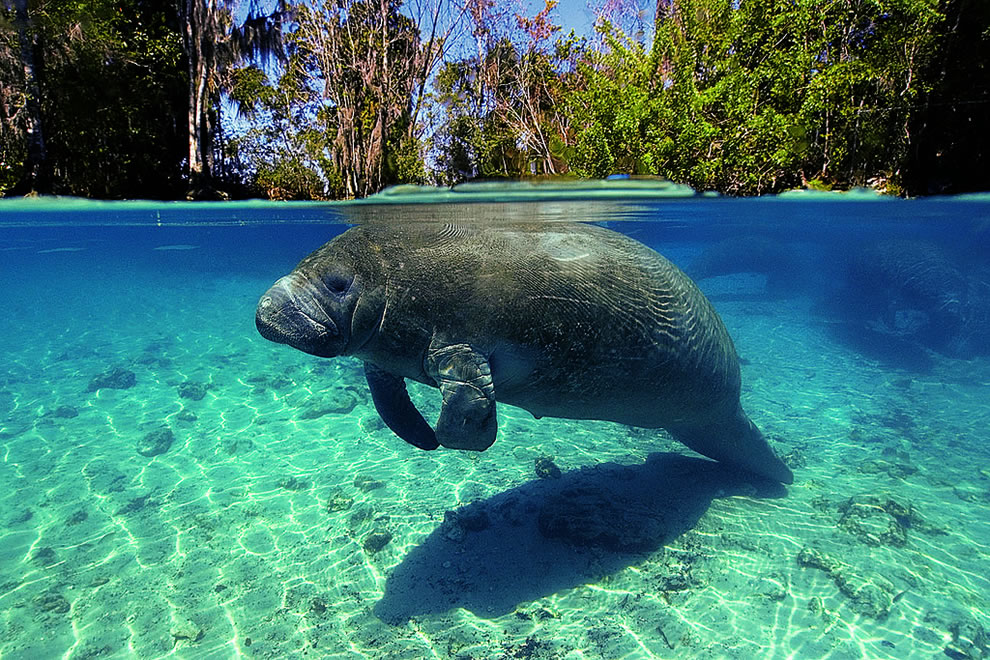 MANATEE IN BELIZE You may not think that the manatee, is something you would encounter on your walk in the jungle, but if your jungle walk follows the sea, then you may very well encounter manatees playing in the rivers and estuaries. The manatee, cruises the coastal waters from Florida to northern Brazil. It moves along at a leisurely pace, browsing for food, walking the bottom on its oar-like flippers while uprooting sea grasses, or galumphing through the shallows searching for floating plant life. Every four or five minutes its snout must emerge to take in a deep breath and at most, it will average six miles per hour, not allowing for resting or for horsing around. The manatee's closest living relative is the elephant. Males are called bulls and the females are called cows. Manatee make random squeaks and chirps white submerged, with no real sense of rhythm. Only between mother and child do their sounds appear to be communicative. Manatee can tip the scales between 400 and 1,300 lbs., all of it pudgy, and they have no neck whatsoever. The tail is fat like a spatula, the muzzle folds over the mouth, and the skin is gray or brown, covered with fine wrinkles and short, upigmented hairs. The manatee have special appeal for us humans. It is gentle and shy, and is near-sighted. It is rarely aggressive - only the bumping of bulls in competition for the attention of a female and often playful, including quite a bit of indiscriminate kissing. When it becomes accustomed to the company of human beings, the manatee will include these creatures in its games. Manatees group and regroup. The only long-term association they make is between cow and calf, which lasts up to two years; the youngster suckles underwater, from teats beneath the mother's flippers. Manatees breed throughout the year. Gestation takes up to 400 days, can you believe it! The average lifespan is not known, although it is recorded that one manatee in captivity lived to the age of twenty-three. Manatees are strict vegetarians, and in return are not a food source for other animals - except man. They have been hunted for their hides, their oil, and their flesh. Here in Belize it is widely and mistakenly held that as meat it has special properties, and that it includes a variety of flavors. Also, the bones are used for jewelry making. However, through the Belize Zoo's nationwide educational campaign, it is hoped that the continued illegal killing of this endangered species will soon cease. An even greater danger to the manatee's survival is involuntary slaughter by the propeller blades of motor boats. Although its hearing is abnormally sensitive, and in an emergency it is able to gear up to 15 m.p.h., still the manatee does not seem to recognize the sound of impeding doom. Other threats to its life are cold snaps, and the careless use of herbicides. And just for the record, the water hyacinth, is the manatee's favorite food! Octopuses, the "Brains" of the sea The Caribbean Reef Octopus is fascinating to look at isn't it? Brown (ranging in shades), is their natural color when they are in their normal state. They are able to change the pigment of their body with ease, as this serves as a protection for them against predators. The Caribbean Reef Octopus, is the octopus that is commonly found shallow warm waters of the coastal areas of Belize. These fascinating creatures are often seen around the Hol Chan Marine Reserve, ranging in size from (6) inches to (3) feet. How To Identify a Caribbean Octopus Caribbean octopuses can be commonly confused with other types of octopuses. One way to definitely tell them apart, is by looking at the eyes. The Caribbean Reef Octopus has a dark circle around their eye. The body is about 6 inches in length but the span of the arms is quite a bit more. This can cover the space of about 36 inches. The overall size of them really depends on the particular region where they happen to live. Complex brains - Octopuses have the most complex brain for invertebrates (animals lacking backbones). Scientists have discovered that octopuses use their memory to learn from their experiences and solve problems as they arise. For example, after a close call with a predator, an octopus will remember where the predator resides and will stay clear of that area. Octopus Ink - When an octopus finds itself in a compromising situation with a predator, it will often release a cloud of dark purple ink into the surrounding water in an attempt to confuse the predator. Sometimes, however, this survival technique backfires and causes harm to the octopus. The ink is highly toxic and if released into a confined area or where water lacks current, the octopus can become ill and even die. Another less deadly survival technique that octopuses have evolved is changing their skin color. If the octopus needs to blend into a background to avoid a predator, pigment cells in the skin are activated, camouflaging the skin to match the surrounding environment. The color of the octopus also reflects the mood of the creature; for example, red signals anger, while white signals fear. When the situation is less tense and it's time for an octopus to mate, this monogamous creature chooses one partner and stays with it for life. Predators Depending on the location where the Caribbean Reef Octopus lives, it can have some concerns with various types of predators. Among them include eels, stingrays, small species of sharks, and various types of fish. If they can’t move away from the situation, they will release ink from their bodies to confuse the predator - allowing them to escape safely. Humans are also considered predators. They are considered to be great for various types of meals such as fried calamari and ceviche. They aren’t in any jeopardy of extinction (at this time), as their number count is still good in many of their habitats. Red Marks Indicate Habitats for the Caribbean Reef Octopus Habitat & Distribution Octopuses live in shallow coastal waters and along the reef where there are formations of caves and dens for them to hide in. You can commonly find them in and around the shallow coastal areas of Belize & the Caribbean where the waters are warm. Thus the name Caribbean Octopus. They will move around from one location to location, never staying for more than a couple of weeks in any one spot. The females who have laid eggs are easy to notice, as they continually hover of one given area until either they die or the eggs hatch. They love to reside in sea grass and along the corral reefs. Octopuses are nocturnal, moving around at night. They do appear to glow at night, from under lighting due to their coloring. Diet & Feeding Habits The Caribbean Reef Octopus spends most of its night looking for food. They majority of the diet is made up of crustaceans, mollusks, crabs and lobsters. An octopus will frequently lure prey by waiving an arm tip, mimicking a worm. The octopus then grabs the prey with its arms, biting it to inject a poisonous substance (paralyzing it) and a digestive enzyme. The octopus then sucks the flesh from the prey, discarding the shell. Various types of small fish are also known to be part of their diet as well. Behavior Like all octopus they live on their own. They don’t seem to be too bothered though when other types of octopus come into contact with them. The passage is often something that occurs without any interaction at all. The only time they will pay any real attention to another octopus, is when they are interested in mating with a female. While all types of octopus are very intelligent, this specific species is said to be among the most intelligent of them all. Extensive research though is almost impossible on them. This is because of the fact that they don’t live very long lives. It is believed that their intelligence would continue to develop and to improve if they lived longer. Anatomy The octopus is totally unique with its soft body, no outer shell and 8 arm projections or tentacles. They have (3) hearts and (9) brains. Two hearts pump blood to the gills, while a third heart circulates blood to the rest of the body. A central brain controls the nervous system, while there is one brain for each of the eight arms. Their mouth and beak are located at the center of the tentacles. If the octopus loses one of the tentacles, another will grow in the same place. On each tentacle are as many as 240 suction cups arranged in 2 rows. For a medium sized octopus, their overall body weight can be just over three pounds. They have a head that is very large which is part of their mantle. The eight arms are extremely thick. They aren’t able to move as quickly as other species of octopus but they don’t have to. Their abilities to lie flat allow them to appear like part of the natural scenery instead of a living creature. The body is often arranged in a pattern that looks like a parachute that is open and lying on the ground. The acute sense of touch that octopuses have also aids in their survival and in finding prey. The suckers that are found on the underside of its eight tentacles act as eyes that can differentiate between different sizes and shapes and help it find prey, such as lobsters and crabs. The eyes of octopuses are also highly complex, comparable to human eyesight. Each tentacle has about 240 suction cups arranged in (2) rows Breeding & Reproduction Two octopuses will mate for life. When it is time for reproduction, the male transfers sperm into the mantle cavity of the female with one of its arms. The female then lays thousands of eggs, attaching them to the roof of her den where they develop for 1-2 months. After the female lays the eggs she does not eat again and consequently dies soon after the eggs have hatched. The devoted male octopus often does not mate again. Since this species of octopus doesn’t live for very long, they are able to mate when they are from 3 to 4 months of age. The males seem to mature sooner than the females. The males will die sooner than the females as their role in mating is done once they have successfully released the sperm sac from their body to that of the female. The males will actually fight with each other for the right to be able to mate with a given female. They would likely not be so eager to do so though if they knew that they would die. This fighting though is nature’s way of ensuring that the best genetic materials are able to be passed on to the future generations of offspring. Even though the male is able to win that battle, he is far from done fighting. The female may not want to mate with him at all. If she doesn’t and he continues to pursue him she may bite off body parts or kill him. Yet the desire to mate is very instinctive for the males so they will continue to pursue a female. She generally will take part in mating as long as her basic needs are being met. The female will die after mating too but she has one more aspect of life left to complete. Her mission at that point in time is to make sure as many of her eggs are able to be fertilized by the sperm and to hatch. There can be as many as 500 eggs that she will release from her body. She will lay them in either January or February. The warmer the water temperature, the sooner she will release them. The incubation period will also be affected by the water. When it is warm the may only have 50 days or so before they hatch. In cooler temperatures it can be as long as 80 days though. The young offspring are amazing – able to move quickly through the water and to instinctively find food. They have a very quick growth rate too due to the whirlwind life span for them. This was me, back in 2010 - a post published on "Our Belize Vacation" with an octopus I caught off the dock by my house.  This was an amazing find off the dock today. When I brought it out of the water, a crowd gathered at the beach, to see what I had caught. I wanted to show everyone what a Caribbean Reef Octopus looks like. The Caribbean Reef Octopus is a coral reef marine animal. It has eight long arms that vary in length and diameter. The "body" is large and chunky in comparison (up to 60 cm long). The Caribbean Reef Octopus is difficult to describe because it changes color and texture in order to blend into its surroundings, using specialised skin cells known as chromatophores. Its color range is incredibly large; it can change from crismson to green, bumpy to smooth. It weighs around 3.3 lb or 1.5 kg. The Caribbean Reef Octopus lives in warm waters around coral reef environments, with grassy and rocky sea beds. The Caribbean Reef Octopus lives in hidden, rocky lairs that are difficult to locate. Their lairs are usually created in shallow warm waters. The Caribbean Reef Octopus is not a social animal and does not interact with other Octopus briareus unless mating. If one Octopus was to go into any other Octopuses lair there would be an inevitable fight. Caribbean Reef Octopuses are usually safe from invoking fights if they stay 60 feet away from other octopuses at all times. If faced with a predator a Caribbean Reef Octopus, like most other octopuses, would suck up a volume of water then expel it quickly in the form of a jet to propel itself away from the foe. To further deter predators the Caribbean Reef Octopus can eject oil to mask its escape. The Caribbean Reef Octopus does not live in its lair for its entire life, instead it moves often except while caring for young/eggs. The Caribbean Reef Octopus feeds on crabs, shrimp, lobsters, and a variety of fish. The Caribbean Reef Octopus is a nocturnal species and only hunts at night. Like all animals found in the sea, the octopus faces such threats as polluted water, as well as diminishing resources due to environmental exploitation. Protecting this species is yet another reason why we need to conserve and respect the environment. Ogcocephalidae is the official term for a bat fish. Batfish can reach in size from around 15 inches, and they grow extremely fast. They have broad, flat heads; slim bodies covered with hard lumps and spines; some species have an elongated, upturned snout; about 14 in. long. They are poor swimmers and usually walk on the sea bottom on limblike pectoral and pelvic fins; most live in deep sea but some inhabit shallow water; members of a group known as anglerfish, are equipped with a “fishing pole” tipped with a fleshy “bait” to lure prey close enough to be eaten; unlike other anglers, can draw apparatus into a tube when not in use. The species found in and around Belize, is the Short-Nosed Batfish, but there are about 60 species of fishes of the family Ogcocephalidae (order Lophiiformes), found in warm and temperate seas; of which the Short-Nosed Batfish is a member. They are laterally compressed fishes similar in appearance to rays, with a large circular, triangular, or box-shaped head and a small tail. The largest members of the family are about 20 inches in length. Typically, bat fish dwell on the bottom of the ocean floor. So this was a rare find indeed. They are found in deep, lightless waters of the Atlantic, Indian and western Pacific Oceans. They are bottom-dwelling fishes, mostly found on the continential slope at depths between 660 feet and 3,300 feet deep. Found singly on mud, rubble and sandy bottoms resting on the sand or partially covered in sand or mud close to reef edges. They feed on algae, fish, invertebrates and worms. These batfishes with their depressed circular/triangular bodies are poor swimmers and have adapted for a life style of crawling about on the sea floor using their pelvic fins and arm like Pectoral fins. They have a small lure on their snout to attract their prey, the lure becomes shorter with age. Also known as Deep-sea Batfishes, Handfishes, Longnose Batfish, Red-bellied Batfish, Seabats, Short-nosed Batfish, Slantbrow Batfish, Walking Batfish and red-lipped Batfish. Bat Fish Geographical Area Snortnose Bat Fish Shortnose Batfish (Ogcocephalus nasutus ) Very uncommon & rare. The Shortnose Batfish is the species found in and around Belize. They were put on the endangered species list (red list) in 2015. The Shortnose Batfish has a long pointed nose (but not a 'real 'nose') projecting from between his eyes. Tail has two dark and one light broad bands on its tail. Colors and mottling can vary from reds and browns to whites and creams. The older the fish, the shorted the nose seems to be. This fish could be considered a living evolutionary, transitional species. His ventral fins have evolved to be used almost like front legs, and its pectoral fins have receded to the rear of his body and are used much like hind legs. Thanks to Alex Herman for these photos taken at Caye Caulker, offshore Belize, which he sent me to identify. They are also known as the Longnose Batfish. There are four Atlantic batfish species. Only two are even rarely found in the Caribbean. On 06-22-17 Tom Krall saw one at Waterlemon in about 25 feet of water, so I'm adding this species to the gallery. Longnose Bat Fish Longnose Batfish (Ogcocephalus corniger) Very uncommon & rare.
The longnose batfish (Ogcocephalus corniger) is a species of batfish found at depths between 95 & 755 feet in the Atlantic Ocean, ranging from North Carrolina to the Gulf of Mexico. Like other members of the family Ogcocephalidae, it has a flat triangular body with coloring varying from yellowish to purple with pale, round spots. The lips are orange-red. Projecting from its head is a characteristic structure that is shared by other anglerfish. They were placed on the endangered species list (red list), in 2015. About Hermit Crabs The hermit crab is a crustacean. This means they have a hard outer shell and belong to the same family as lobsters, shrimp, and crab. They can come in different colors such as red, brown, purple. They can also have patterns, stripes, or dots. There are about 1,000 different species or kinds of hermit crabs in the world. The Caribbean Hermit Crab (Coenobita Clypeatus), is also known as the solider crab, the West Altantic crab, the tree crab, and the purple pincher (due to the distinctive purple claw), is a species of land hermit crab native to the west Atlantic, Bahamas, Belize, Southern Florida, Venezuela, the Virgin Islands, and the West Indies. Hermit crabs can be as small as a half inch long or as big as 16 inches. Hermit crabs have ten jointed legs. They also have two pairs antennae. One pair they use for feeling and the other pair they use for smelling and tasting. Most hermit crabs have long, spirally curved abdomens, which are soft. The vulnerable abdomen is protected from predators by a salvaged empty seashell carried by the hermit crab, into which its whole body can retract. Most hermit crabs will use the shells of sea snails (even hollow pieces of wood and stone) to occupy. The tip of the hermit crab's abdomen is adapted to clasp strongly onto the columella of the snail shell. As the hermit crab grows in size, it has to find a larger shell and abandon the previous one. This is often present vigorous competition among hermit crabs for shells. The interesting thing about a hermit crab's shell, is that it finds its shell from other animals. As they grow and get bigger, hermit crabs find bigger shells to use. They need these shells to protect their soft bodies and for shelter. Hermit crabs spend a lot of time on land, but they have gills like a fish. Their shells help them keep the air around their gills humid so they can breathe out of the water. Hermit crabs tend to be nocturnal.
Physical Description Hermit crab species come in a range of sizes, from a fraction of an inch (a few millimeters) to nearly the size of a coconut. A hermit crab's front half is covered with a hard exoskeleton, like that of most other crabs. Its long abdomen has a softer exoskeleton, which can adapt to fit into a spiraled snail shell. A hermit crab presses its abdomen, its fourth and fifth pairs of legs, and the appendages at the end of its abdomen (called uropods) against the shell's inner wall by contracting its longitudinal muscles. Its large, left uropod hooks to the center post of the shell. It is used for defense, holding onto tree limbs and balance. The smaller, right claw and the next pair of appendages, which also have claws, are used for collecting and passing food and water to the crab's mouth. Rough surfaces help hold the crab in the shell. Hermit crabs have reduced gills, and their moist gill chambers have highly vascularized areas for gas exchange. They have stalked eyes with acute vision, and two pairs of antennae. They use the longer pair for feeling and the shorter, feathery pair for smelling and tasting. They also have sensory hairs that are part of the exoskeleton. They use these hairs and their antennae as vibration sensors. Hermit Crab Molting & Growth Hermit crabs molt as they grow, shedding their exoskeletons and creating new, larger ones to accommodate their larger bodies. Some crabs leave their shell and bury themselves in sand to molt. Some species store water in their shell before molting and remain in the shell throughout the molt, which may take from 45 to 120 days. You can tell that a crab is freshly molted when it has a clean, bluish color. A crab may eat its molted shell, possibly for its calcium, vitamins and minerals. The availability of empty shells at any given place, depends on the relative abundance of gastropods and hermit crabs, matched for size. Hermit crabs that are kept together, may fight or kill a competitor to gain access to the shell they favor. However, if the crabs vary significantly in size, the occurrence of fights over empty shells will decrease or remain non-existent. Several hermit crab species, both terrestrial and marine, use "vacancy" chains” to find new shells: when a new, bigger shell becomes available, hermit crabs gather around it and form a kind of queue from largest to smallest. When the largest crab moves into the new shell, the second biggest crab moves into the newly vacated shell, thereby making its previous shell available to the third crab, and so on. When selecting a new shell, a hermit crab follows a series of steps:
When they find a suitable larger shell, they will crawl into it and this becomes their new home. The shell will provide the Hermit crab with a place to rest or hide if they sense fear from whats around them. Their bodies are quite vulnerable and this is why they rely on that shell to offer them protection. As hermit crabs grow, they must exchange their shell for a larger one. A hermit crab with a shell which is too small can not grow as fast as a hermit crab with a well-fitting shell. Shells that are too small for their abdomens, cannot retract completely and this makes them vulnerable to being eaten by a preditor. Hermit Crab Behavior The Hermit Crab loves to climb and that is something that allows them to explore their environment. If you have one in captivity it should have a cage that it can use for climbing activities. They tend to be in their shells during the day but then come out at night and can be very active. The Hermit Crab isn’t able to bite because they don’t have any teeth. However, they do have the ability to pinch. They will do so if they feel that they are in danger and they aren’t able to coil up in their shell. They will also pinch if they are in their shell and someone is trying to coax them out of it. There have been some species of the Hermit Crab reported to make croaking noises. Experts are still looking into what form of communication that this serves. They feel it could range from alerting about dangers, finding a mate, or a simple way for them to be able to explore their surroundings and get feedback from other living creatures around them. Native Habitat Many different species of land hermit crabs live in tropical areas of the Indo-Pacific region, the western Atlantic and the western Caribbean (which includes Belize). Land hermit crabs live close to the shoreline and must have access to both land and water. They use pools and crevices of sea water to wet their gills and the interiors of their shells, and they reproduce and spend their early stages in water. Other hermit crab species are entirely aquatic. You will find the hermit crab living in a variety of locations. They are highly adaptable but they do need to be where they can find shells. This is why you will mainly find them living around the oceans. Hermit Crabs are often common pets that people find fascinating but that they also find them to be unique and easy to care for. Land Crabs - Terrestrial Hermit crabs (land crabs) begin their lives in the sea but, through a series of molts, develop the ability to breathe air. After the last developmental molt, the young hermit crab will drown if left in water for an indefinite period of time. Terrestrial Hermit crabs will never break their link to the sea. They will continually use and keep small amounts of water in their shells at all times, to moisten and keep their modified gills hydrated. Marine Crabs - For some larger marine hermit crab species, having one or more sea anemones growing on the shell can be very useful, because the anemones tend to scare away fish and other marine predators which might otherwise attack the crab. The sea anemone also benefits because it is well-positioned to consume loose fragments of the Hermit crabs meals. Because of this mutualism (a biological interaction takes place), sea anemones can be, and sometimes are, transferred to a new shell when the hermit crab changes shells. Hermit Crab Diet Hermit crabs are omnivores scavengers, which means they eat both plants and animals. Hermit crabs are not picky eaters! They eat insects, worms, small fish, and plankton. They drink water by dipping their claws into the water and lifting out small drops. In the wild, hermit crabs have a lot of predators. Since the hermit crabs are generally small, they are hunted by fish, sharks, squid, and octopus. The diet for the Hermit Crab is very diverse. They consume both small insects and plants so they are omnivores. They require a balanced form of nutrients and calcium from their diet in order for them to be able to survive. The Hermit Crab isn’t able to bite because they don’t have any teeth. The left claw is larger in size than the right claw (and purple in color). This claw is used for defense, and holding onto things and for balance. The smaller right claw is used for collecting and passing food & water to the crab's mouth. Mating & Reproduction Both land and marine hermit crabs mate in seawater. Mating for the hermit crabs is during the late spring or early summer of each year. Before mating, the male holds the female with one claw, and then taps or strokes her with the other or pulls her back and forth. Both crabs emerge partially from their shells, placing their stomachs together to mate. The males offer sperm but the female will store it. A female is able to carry several thousands of eggs and she will use the sperm to fertilize her eggs once she gets them to her destination. Female land hermit crabs release fertilized eggs into the ocean. The spawning (called "washing" in the English-speaking Caribbean) occurs on certain nights, usually around August. After the eggs hatch, the are known as larvae. These young crabs live as microscopi plankton for several weeks before settling on the bottom and searching for a shell to inhabit. Larvae go through several aquatic life stages and molts. After they molt several times they will become a young crab. These young crabs are often consumed by various predators both in the water and on land. Even though they have their shell to protect them, it is when they are out of the shell that they are very vulnerable to those fast predators. When adulthood is reached, the crabs migrate to shore for a terrestrial life. Hermit crabs do have an instinct to go to a spawning area to deposit their eggs, for this reason Hermit crabs will not mate in captivity. FUN FACTS ABOUT HERMIT CRABS HERMIT CRAB FACTS
INTERESTING CHARACTERISTICS ABOUT HERMIT CRABS Hermit crabs are fascinating creatures. There are both terrestrial hermit crabs (which are sometimes kept as pets) and aquatic hermit crabs. Both types of crabs breathe using gills. Aquatic hermit crabs get their oxygen from the water, while land hermit crabs need a humid environment to keep their gills moist. Even though you may see a hermit crab on the beach near the ocean, this could still be a marine hermit crab. Even though they may look like appealing pets, don't take a wild crab home with you, as hermit crabs (especially aquatic ones) have very specific requirements they need to survive. Charatertistic #1) Hermit Crabs Unlike true crabs, if a hermit crab gets sick of its shell, it can move out. In fact, they have to change shells as they grow. While gastropods like whelks, conch and other snails make their own shells, hermit crabs seek shelter in the shells of gastropods. Hermit crabs can commonly be found inhabiting the empty shells of animals such as periwinkles, whelks and moon snails. They usually don't steal shells that are already occupied. Instead, they'll search for vacant shells. Charatertistic #2) Hermit crabs are crustaceans, which means they are related to crabs, lobsters and shrimp. Although it has 'crab' in its name, a hermit crab out of its shell looks more similar to a lobster than a crab. In this cool (but somewhat creepy!) image, you can get an idea of what a hermit crab looks like inside its shell. Hermit crabs have a soft, vulnerable abdomen that is twisted to wrap around the spire inside the shell of a gastropod. The hermit crab needs this shell for protection. Because they don't have a hard exoskeleton and need to use another shell for protection, hermit crabs are not considered "true" crabs. Characteristic #3) Like other crustaceans, hermit crabs molt as they grow. This involves shedding their exoskeleton and growing a new one. Hermit crabs have the extra complexity of having to find a new shell when they outgrow their old one. When a hermit crab is ready to molt, its new skeleton grows under the old one. The old exoskeleton splits and comes off, and the new skeleton takes some time to harden. Because of this, crabs often dig a hole into the sand to provide protection during the vulnerable time of molting. Characteristic #4) Hermit crabs are always on the lookout for new shells to accommodate their growing bodies. When a hermit crab sees an ideal shell, it will sidle up very close to it, and check it out with its antennae and claws. If the shell is deemed suitable, the hermit grab will quickly switch its abdomen from one shell to the other. It may even decide to go back to its old shell. Characteristic #5) Diet Hermit crabs have a pair of claws and two pairs of walking legs. They have two eyes on stalks to make it easier to see what's around them. They also have two pairs of antennae, which are used to sense their environment, and 3 pairs of mouthparts. Hermit crabs are scavengers, eating dead animals and whatever else they can find. Hermit crabs may be covered with short sensory hairs that are used for smell and taste. Characteristic #6) Hermit crabs often have growths of algae or other organisms on their shells. They also have symbiotic relationships with some organisms, such as anemones. Anemone hermit crabs attach anemones to their shell, and both organisms benefit. The anemone stings potential predators with their stinging cells and stinging threads and also helps hermit crabs blend in with their surroundings. The anemone benefits by eating the leftovers of the crab's meal, and being transported to food sources. The anemone crab will even take the anemone(s) with it when it moves to a new shell! WHAT YOU DIDN'T KNOW ABOUT HERMIT CRABS 1. House bound - These soft-bodied crustaceans are so dependent on their shells for protection that they will only venture out to copulate or to upgrade to better accommodation. 2. Paddling pools - Only smaller specimens, inhabiting periwinkle shells, tend to occur in rockpools. Larger ones, which can reach 8cm in length and require more spacious accommodation such a whelk shells, usually live below the low-tide mark. 3. Identity crisis - Hermit crabs are not true crabs, but are more closely related to squat lobsters, which are not themselves true lobsters. 4. Multipurpose mouthparts - These opportunistic omnivores will scavenge, kill, browse and graze whatever plant or animal matter is available. They are readily cannibalistic and can filter microscopic food from the water using their bristly mouthparts. 5. Multiple occupancy - Common hermits encourage anemones to attach to their shell, and will even transfer them from shell to shell when they move house. The anemones’ stinging tentacles may deter predators. 6. Handed hermits - Unlike many fiddler crabs, which may be left- or right-handed, a common hermit’s right-hand claw, or cheliped, is always the larger of the two. 7. Growing smaller - If they find themselves in a shell that is too small, and if nothing larger is available, common hermits have the rare ability to decrease in size from molt to molt. HERMIT CRAB RACES - at Crazy Canucks, Ambergris Caye Hermit Crab races at Crazy Canuck is just one example of island life entertainment.
 You may not think that the manatee, is something you would encounter on your walk in the jungle, but if your jungle walk follows the sea, then you may very well encounter manatees playing in the rivers and estuaries. The manatee, cruises the coastal waters from Florida to northern Brazil. It moves along at a leisurely pace, browsing for food, walking the bottom on its oarlike flippers while uprooting sea grasses, or galumphing through the shallows searching for floating plant life. Every four or five minutes its snout must emerge to take in a deep breath and at most, it will average six miles per hour, not allowing for resting or for horsing around. The manatee's closest living relative is the elephant. Males are called bulls and the females are called cows. Manatee make random squeaks and chirps white submerged, with no real sense of rhythm. Only between mother and child do their sounds appear to be communicative. Manatee can tip the scales between 400 and 1,300 lbs., all of it pudgy, and they have no neck whatsoever. The tail is fat like a spatulate, the muzzle folds over the mouth, and the skin is gray or brown, covered with fine wrinkles and short, upigmented hairs. The manatee have special appeal for us humans. It is gentle and shy, and is near-sighted. It is rarely aggressive - only the bumping of bulls in competition for the attention of a female and often playful, including quite a bit of indiscriminate kissing. When it becomes accustomed to the company of human beings, the manatee will include these creatures in its games. Manatees group and regroup. The only long-term association they make is between cow and calf, which lasts up to two years; the younster suckles underwater, from teats beneath the mother's flippers. Manatees breed throughout the year. Gestation takes up to 400 days, can you believe it! The average lifespan is not known, although it is recorded that one manatee in captivity lived to the age of twenty-three. Manatees are strict vegetarians, and in return are not a food source for other animals - except man. They have been hunted for their hides, their oil, and their flesh. Here in Belize it is widely and mistakenly held that as meat it has special properties, and that it includes a variety of flavors. Also, the bones are used for jewelry making. However, through the Belize Zoo's nationwide educational campaign, it is hoped that the continued illegal killing of this endangered species will soon cease. An even greater danger to the manatee's survival is involuntary slaughter by the propeller blades of motor boats. Although its hearing is abnormally sensitive, and in an emergency it is able to gear up to 15 m.p.h., still the manatee does not seem to recognize the sound of impeding doom. Other threats to its life are cold snaps, and the careless use of herbicides. And just for the record, the water hyacinth, is the manatee's favorite food! |
Is located on the island of Ambergris Caye, directly across from the Belize Barrier Reef, off the mainland coast of Belize. The property is nestled in a cluster of Australian Pine trees, backed to a littoral jungle, and surrounded by tropical gardens. It's about a one minute walk from the property to the beach, and a 10-15 minute drive from the island airstrip to the property.
We offer one bedroom suites (455 s.f.) of living area to include: livingroom, kitchenette, private bathroom and bedroom. We are also about a one minute walk from one of the best restaurants on the island serving (breakfast, lunch & dinner). Within walking distance you can find: (3) blocks is Robyn's BBQ (4) blocks is 2 fruit stands (5) blocks local grocery store IF YOU'RE COMING TO BELIZE TO............... If you're coming to Belize to dive the Blue Hole, descend the shelf walls at Turneffe, snorkel the Barrier Reef, explore Mayan ruins, rappel into a cave, kayak along the river through caves, zip line through jungle tree tops, hike through a cave to see an ancient human skeleton, swim with sharks, listen to Howler Monkey's, hold a boa constrictor, feed a jaguar, horseback ride through the jungle, canoe through a cave, rappel down a waterfall, sail around an island, enjoy cocktails & dinner to a sunset, climb 130' feet to the top of a Mayan ruin, rip up the jungle trails on an ATV, float through a series of caves on a tube, and sip on a rum punch..... then this is the place for you. Belize Budget Suites, offers you clean, affordable, attractive, accommodations, at prices that allow you to do all the things just mentioned. Archives
February 2021
Categories
All

For All Your Home Improvement Needs

For all Your Real Estate Needs
501-226-4400 10 Coconut Dr. San Pedro, Belize Your Ad Could Go Here
|

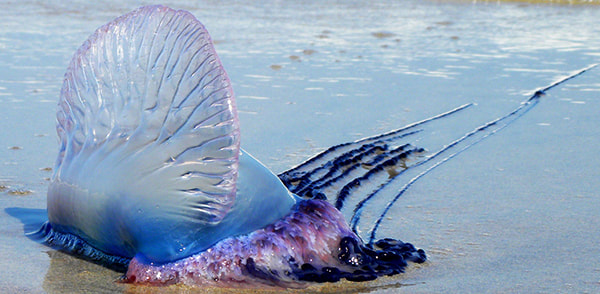
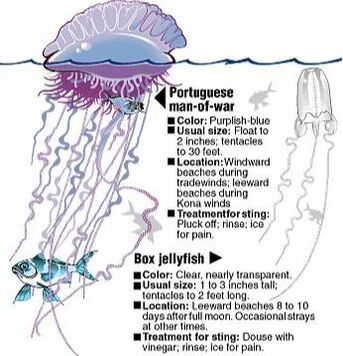






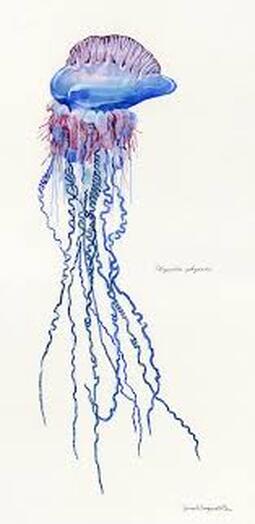










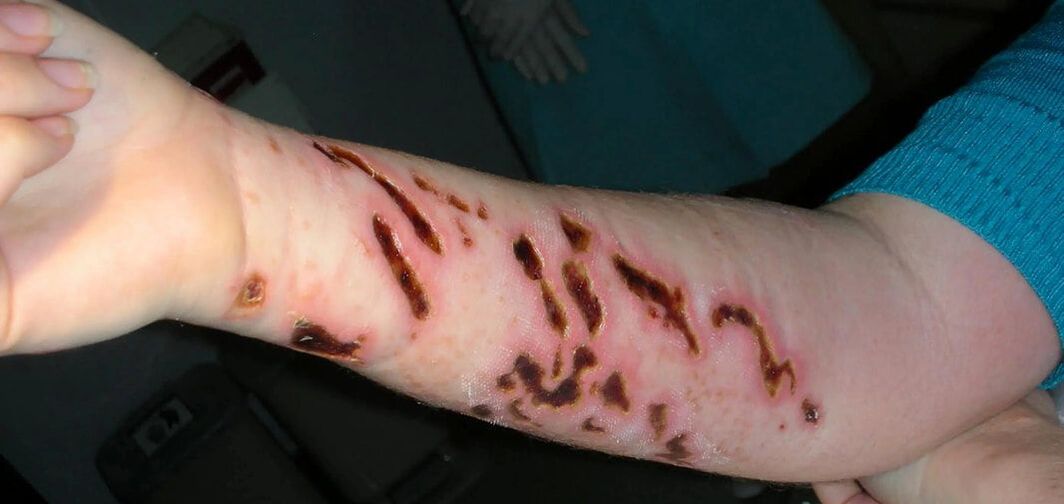









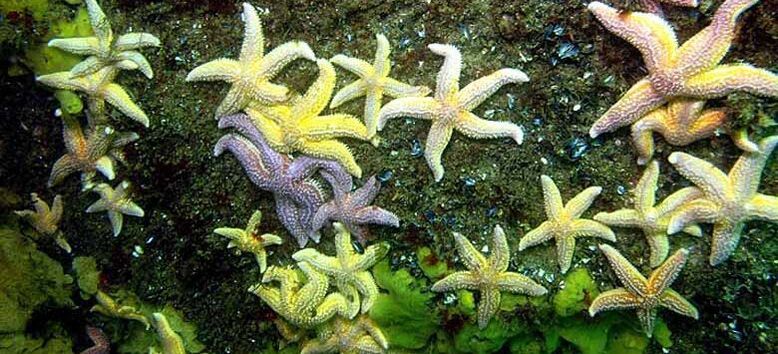








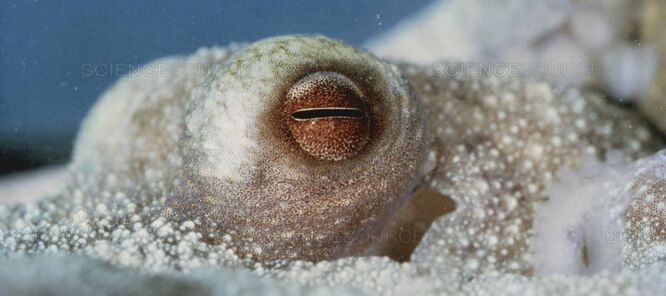



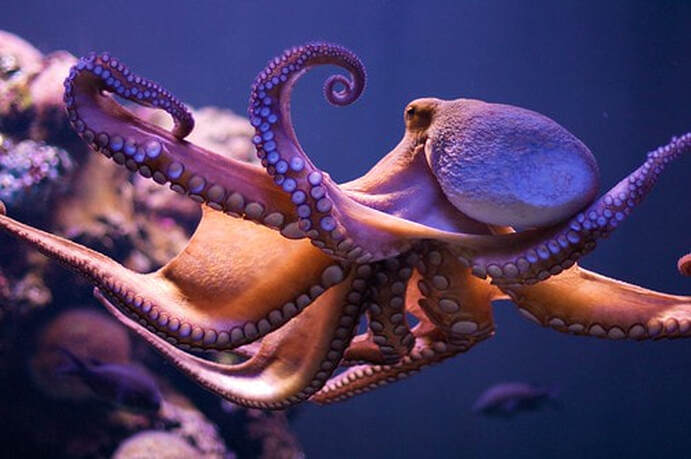





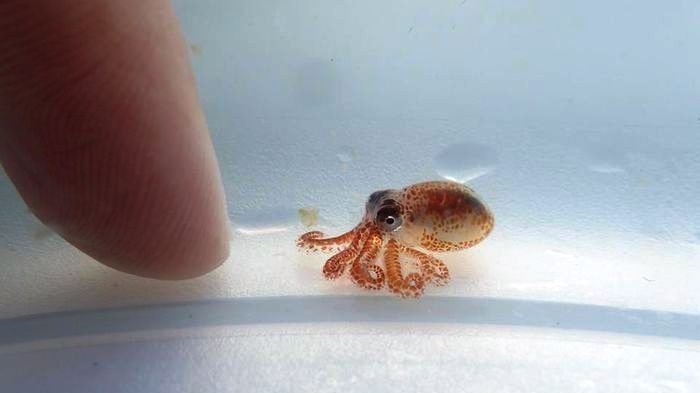








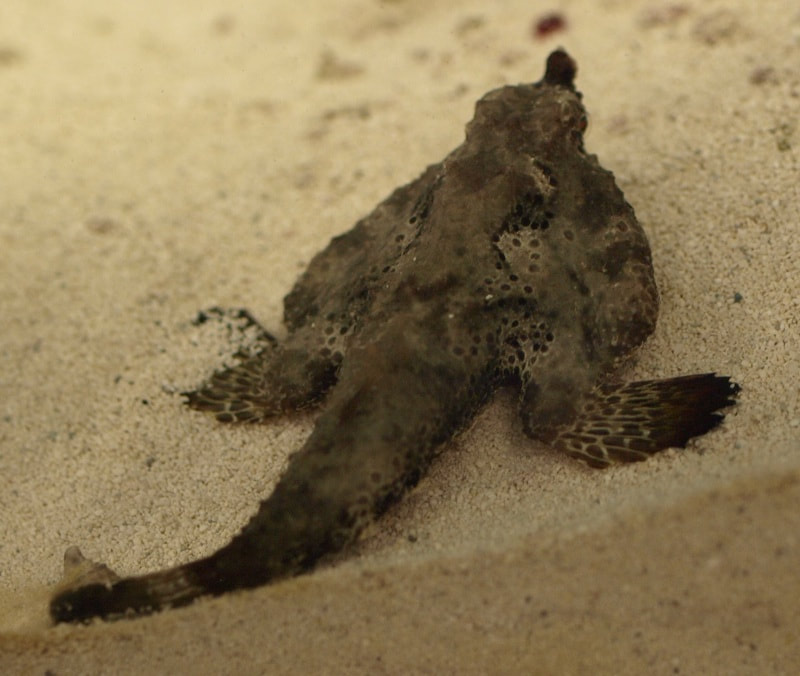




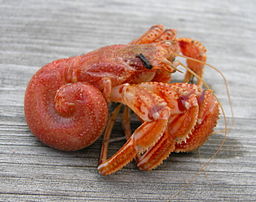
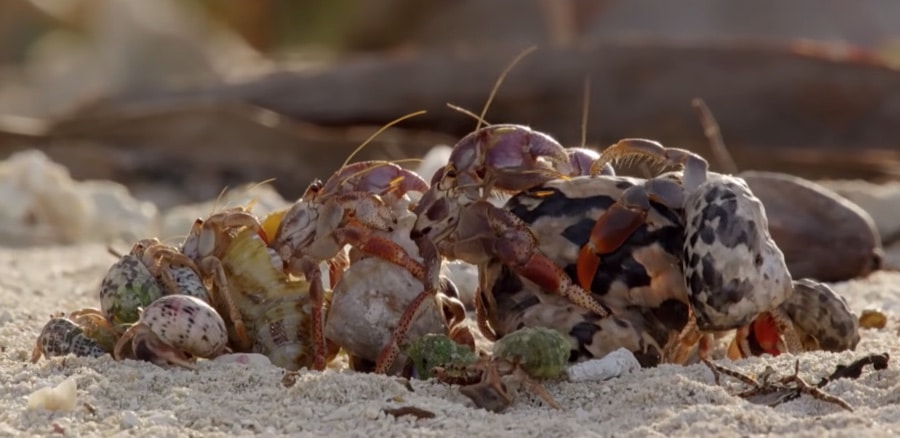

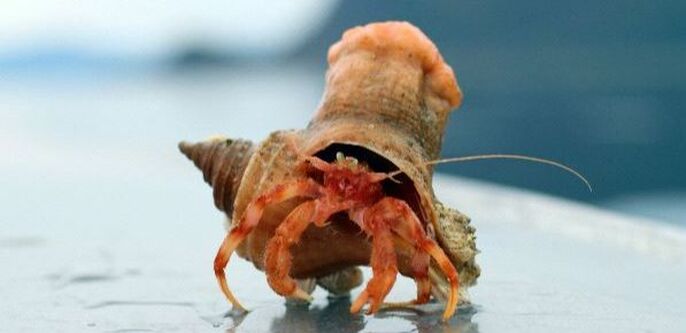








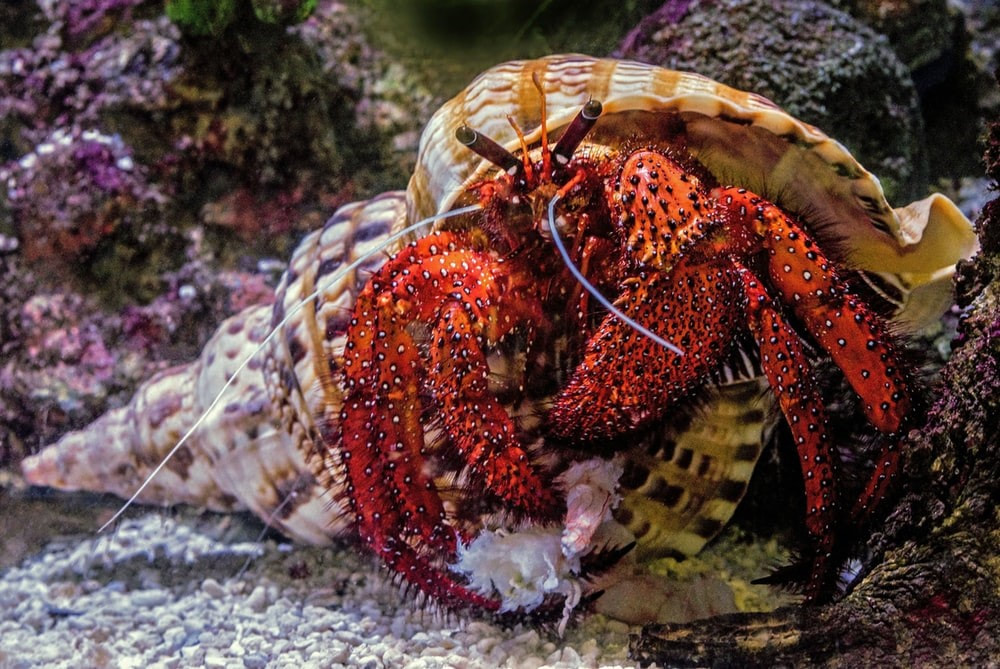
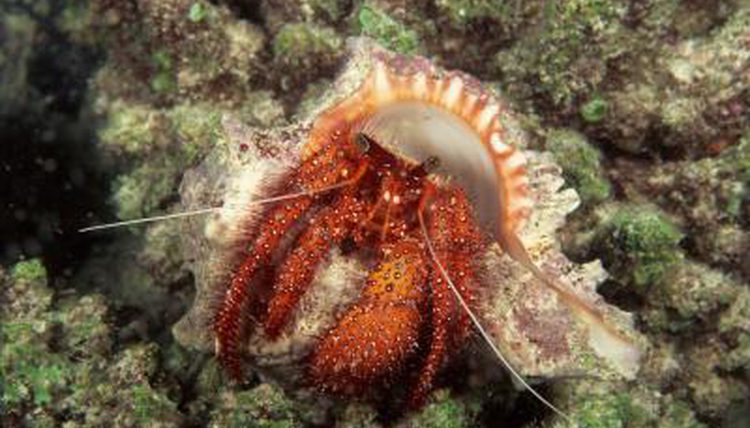








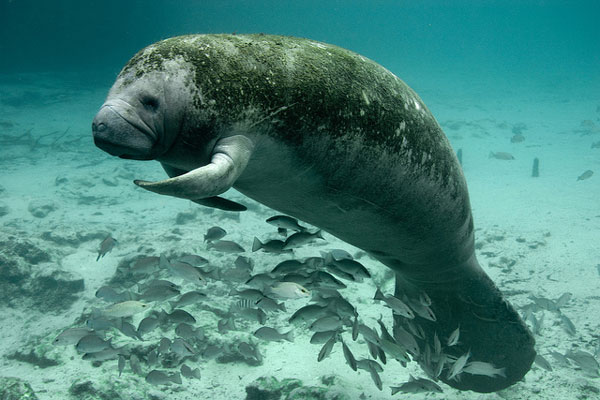
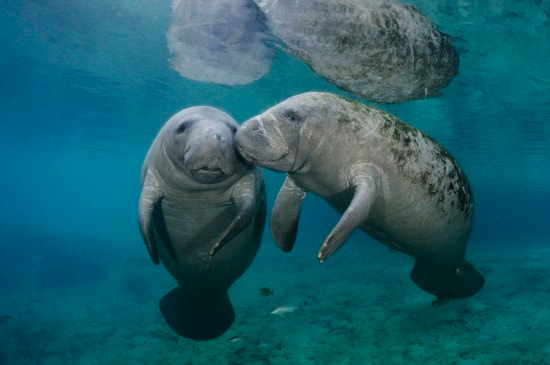





 RSS Feed
RSS Feed























